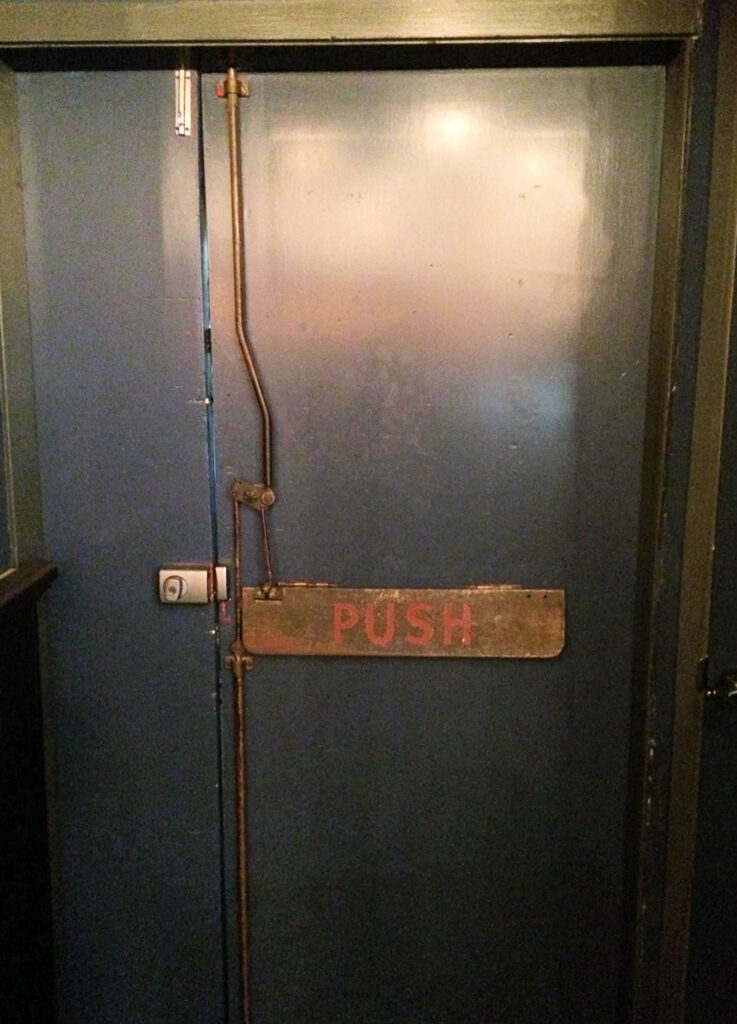 I recently saw this Throwback Thursday photo posted by Deena Jones on the Crap Locksmithing Facebook page, and I asked if I could share it here (it’s anything but “crappy” if you ignore the rim deadbolt!). Coincidentally, I had just looked at the requirements for panic hardware in the 1927 edition of the NFPA Building Exits Code, and the word “PUSH” on this hardware rang a bell.
I recently saw this Throwback Thursday photo posted by Deena Jones on the Crap Locksmithing Facebook page, and I asked if I could share it here (it’s anything but “crappy” if you ignore the rim deadbolt!). Coincidentally, I had just looked at the requirements for panic hardware in the 1927 edition of the NFPA Building Exits Code, and the word “PUSH” on this hardware rang a bell.
The 1927 edition of the Building Exits Code (now NFPA 101 – Life Safety Code) was the first edition of this code, and panic hardware was referenced. In stairway enclosures in new and existing schools, these were the requirements for the hardware on exterior exit discharge doors:
Exterior doors shall be operated by bars or other panic hardware device. Single leaf doors rather than double are recommended because hardware now available is more satisfactory for single than double doors. If glass is used in doors, it shall be wired glass.
- Bars or other panic hardware devices should be of types that are applied to the surface of the door.
- The bar or releasing device should extend for three quarters of the width of the door at the latch side.
- The bar or releasing device should have a projection of not more than 3½ inches from the face of the door and the space between the bar and the door should be closed or filled with solid panel allowing not more than 1 inch between the back of the panel and the surface of the door.
- Upon this panel should be engraved or embossed in large letters “PUSH.”
I’m pretty sure that what we are seeing in this photo is a very early example of the panic hardware required by the Building Exits Code. Note that in 1927, the bar or releasing device was required to extend 3/4 the width of the door – current codes require the actuating portion to extend 1/2 the width of the door. It’s interesting to see that even a century ago, the hardware for single doors was more reliable than pairs. The requirement for wired glass is also notable, because we now know more about the hazards of traditional wired glass. I’m curious about the the 3 1/2-inch limit on the projection (now 4 inches for accessibility reasons), and the 1-inch limit on the space behind the panel. Does anyone have a theory for why that dimension was limited?
If you’re like me and you think hardware history is interesting, check out this letter written by Carl Prinzler in the late 1930’s – Carl was one of the inventors of the first panic hardware.
Cool, right?
You need to login or register to bookmark/favorite this content.

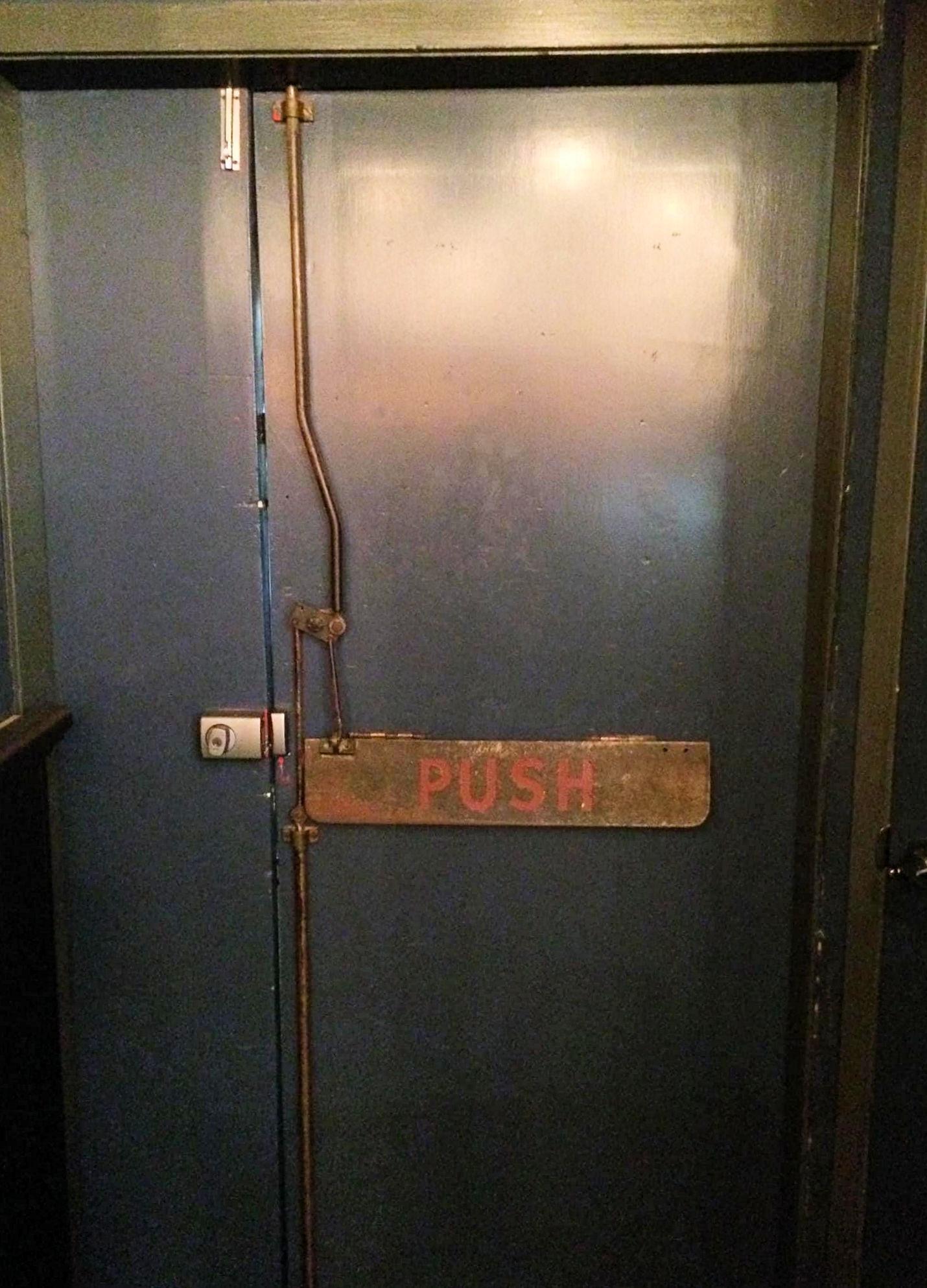
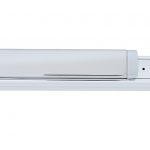
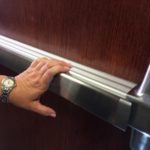
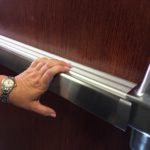
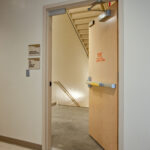




1. Well less operating parts than???
2. So what year did they eliminate the Push word requirement?
3. What year did they start requiring testing
And Labeling?
Near picture and article
Hum looking at large loss of life, kind of no year connection. I know the fires did change code
Maybe took awhile for hardware to catch up
Hi Charles –
1. Yes, I think the devices were simpler in the Olden Days.
2. That’s a great question – I’m not sure when this occurred – I will try to find out but I don’t have all of the editions of the code.
3. Same as #2. 🙂
– Lori
The restriction of less than 1″ behind the panel was probably for the same reason we have similar ones today – to prevent people from chaining the doors shut and preventing egress. Didn’t the Chicago theater fire that inspired the Von Duprin panics have some doors that were chained shut?
I would be interested to find out if that restriction was still in place when many panic devices shifted to the crossbar style and if it was not, when and why it was taken off the requirements.